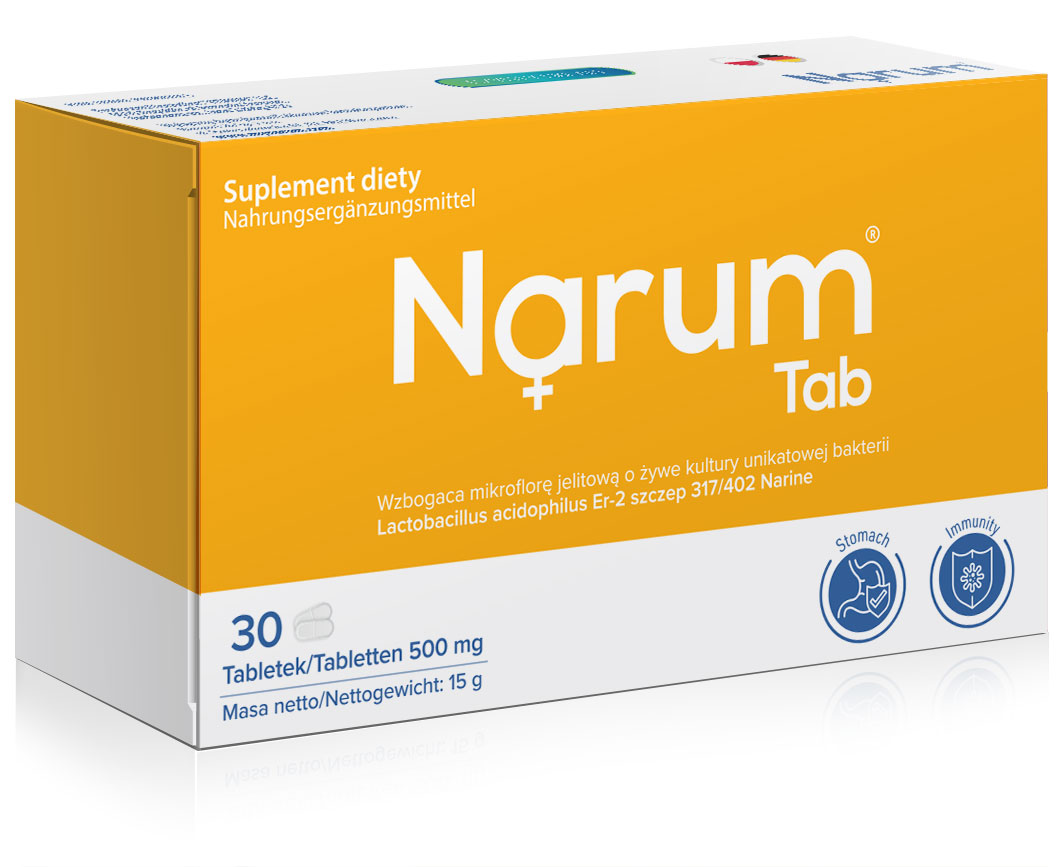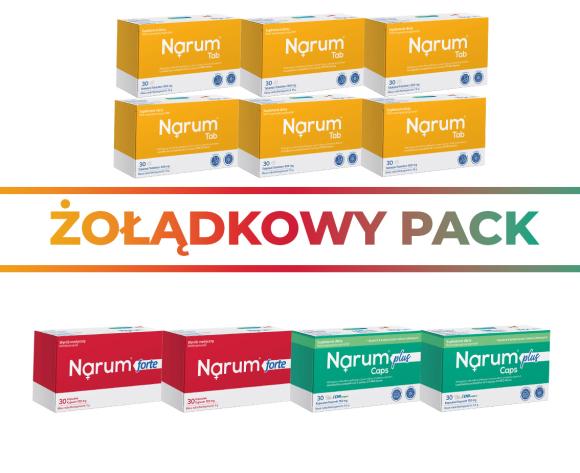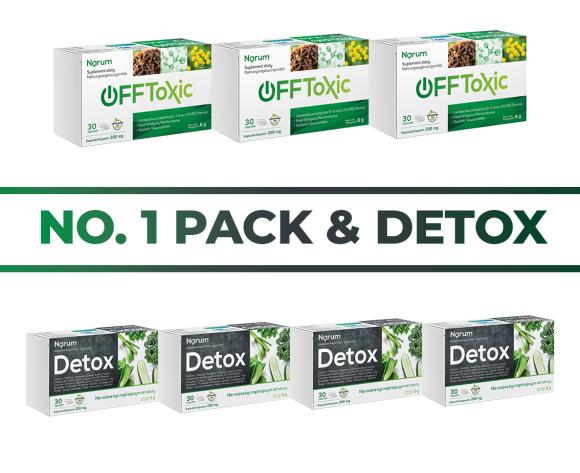Helicobacter Pylori - infection, symptoms, treatment
Helicobacter Pylori is a spiral Gram-negative bacterium that inhabits the gastric epithelium. It should not be underestimated, because infection with it can lead to many ailments and disease states, and even become one of the factors contributing to the occurrence of stomach cancer. Helicobacter Pylori was isolated in 1982 by two Australians: Barry Marshall and Robin Warren. The bacteria was named Campylobacter pyloridis , but in 1989 it was changed to Helicobacter Pylori , as it remains today. As an interesting fact, it is worth mentioning that in the early 1880s, Walery Jaworski, a professor from the Jagiellonian University, was interested in it, describing the bacterium as spiral and living in gastric juice. He then named it Vibrio rugola.
Helicobacter Pylori - infection and symptoms
In general, infection occurs already in childhood, but, as is often the case, seniors are also at increased risk. Helicobacter Pylori affects a large number of people due to its common nature. The infection is usually asymptomatic, which further emphasizes its harmful and dangerous nature. Although the bacterium itself often does not cause specific symptoms, only in some cases vomiting, nausea, etc. appear, it may be a stimulator of diseases such as gastritis, stomach cancer, gastric ulcer and duodenum, coronary heart disease, and even allergy or anemia.

How to detect Helicobacter Pylori?
It would seem that since the infection is often asymptomatic, its detection probably concerns only selected, very rare cases, and therefore the diagnosis may be very limited. However, it turns out that there are several methods of recognizing the presence of infection in the body. These methods can even be divided into two subgroups - non-invasive and, which turns out to be very logical, invasive. The first include a blood test detecting the presence of antibodies against the Helicobacter bacterium, a test detecting its antigens in stool, and the fastest, a breathing test performed using urea with a radioactive carbon isotope (the Helicobacter Pylori bacterium has the ability to decompose urea into carbon dioxide and ammonia). In the second subgroup, each method of detecting infection is based on an endoscopic examination, i.e. checking the condition of the body from the inside using specialized optical equipment (endoscope). One of the tests included in this subgroup is a microscopic examination of a section taken from the pyloric part of the stomach, another is the urease test , in which a section of the stomach mucosa taken from the patient is analyzed. The last method is bacterial culture , which is used to check drug resistance, and to perform it, a fragment of the mucosa of the prepyloric region of the stomach is taken from the patient.
Helicobacter Pylori treatment
Now that we know how to diagnose Helicobacter Pylori infection, the question arises: how to fight it? Treatment usually involves antibiotics. Moreover, it is worth mentioning that very often not one preparation is used, but even two or even three different drugs. Unfortunately, such action may be associated with various types of accompanying ailments - making everyday functioning difficult for patients, including persistent intestinal problems. Therefore, it can be concluded that it is necessary to find a replacement for standard treatment, one that, while beneficial to one, will not harm the other (by exhausting the body). But maybe it's worth considering whether such a preparation already exists? But where to start, where to focus your attention in this search? The most obvious, spot-on, but often underestimated answer is nature. It is from its treasury that a person can draw a lot of good to help himself. One of its unique treasures are probiotics. Properly selected strains are able to extremely effectively support the body in the fight against various pathogens, including Helicobacter Pylori.
Narine bacterium and Helicobacter Pylori
Lactobacillus acidophilus Er-2 strain 317/402 Narine is a probiotic bacterium isolated in 1954 by the Armenian microbiologist prof. Levon Akopovich Erzinkyan, from the meconium of his granddaughter named Narine. This bacterium has many health-promoting properties, including: sealing the intestines - creating a barrier protecting the body against toxins and pathogens, inducing the production of interferon and NK (Natural Killer) cells, but these are not all of its properties. In today's article, however, it is worth mentioning one more unique feature, which is high resistance to acid and bile, which is of course of great importance in the treatment of Helicobacter Pylori bacteria that inhabit the acidic environment of the stomach. As we can read in the book "Forbidden Bacteria. The secret of health.” (E. Karlenovich, W. Kowalewski, 2020): "Research in recent years has shown the existence of antagonistic activity of lactic acid bacteria towards Helicobacter pylori. It has been shown that the inhibitory effect is also observed later after the end of the intake of lactic acid bacteria, and that the simultaneous introduction of Helicobacter pylori with a culture of lactic acid bacteria prevented the adhesion of Helicobacter pylori to the stomach wall. Lactic acid bacteria culture is a new, effective agent in the treatment of Helicobacter pylori - related diseases. Including it in the comprehensive therapy of these diseases will reduce the doses of antibiotics, ensure long-term control over the activity of Helicobacter pylori, reduce the likelihood of re-infection with this microorganism after eradication, and prevent the development of intestinal dysbacteriosis while taking antibiotics. Therefore, combining the mentioned unique properties of Narine and the above-quoted claim, we can safely talk about the unique effect of the bacteria on Helicobacter Pylori infection and seriously consider probiotic products with Lactobacillus acidophilus Er-2 strain 317/402 in the fight against this pathogen.
 Narum Tab
Narum Tab
The ideal preparation for Helicobacter Pylori therapy will be Narum Tab . This is a product containing the bacterium Lactobacillus acidophilus Er-2 strain 317/402 Narine and microcrystalline cellulose (MCC 101). Thanks to this, it reaches the stomach, which is the most vulnerable organ when infected with Helicobacter Pylori. Narum products are also great for prophylaxis to prevent the possible development of various types of infections. The ideal combination is to act on the entire stomach and intestines at the same time, which is why we recommend using the Stomach Set , which includes tablets that act in the stomach and capsules that support the intestines. It is worth remembering that you should limit the consumption of carbohydrates, bread, fast food and sweet drinks. If this does not work, you should undergo a comprehensive deworming of the body (we recommend the No. 1 Pack & Detox kit) and then take the Stomach Kit again. After a few days, you may experience an unpleasant burning sensation in your stomach, which goes away after a few days and does not return. Due to the long-term destruction of the digestive system, we recommend taking these preparations for many months; the doses may be smaller, but it is important to maintain the state of regeneration.
Sources:
Urban J., Helicobacter pylori – characteristics and pathogenicity, Wroclaw Medical University and Polish dental Society, dent. Med. Problem 2010, 47, 4, 482–486, PDF
Kenneth EL McColl, MD Division of Cardiovascular and Medical Sciences, University of Glasgow, Gardiner Institute, Glasgow, UK. Britain, Helicobacter Pylori Infection, N Engl J Med 2010; 362:1597-604 Transl. Sławomir Katarzyński, MD, PhD, Helicobacter Pylori infection , Medycyna Po Dyplomie, vol. 19/No.9/September 2010, pp. 97-106, PDF
Jagusztyn-Krynicka EK, Godlewska R., Łaniewski P., Helicobacter pylori - pathogen of 2005, Space Problems of Biological Sciences, Polish Society of Naturalists. Kopernika, Volume 54, Number 4 (269), 2005, pp. 307–319, PDF
Wiercińska M., Helicobacter pylori (H. pylori) - symptoms of bacterial infection, tests and treatment, 1996–2022 Practical Medicine [access: December 7, 2022]
https://www.mp.pl/pacjent/gastrologia/choroby/zoladek/134806,helicobacter-pylori
Tomas M., Pietrzak W., Nowak R., Substances of natural origin in the fight against Helicobacter pylori infections, Borgis, Postępy Fitoterapia 1/2012, pp. 22-27, PDF
Karlenovich, W. Kowalewski, Forbidden bacteria. Secret of health , Narum, Warsaw, 2020, pp. 118 – 123
Enel-zdrowie, Endoscopy - what is it, how to prepare?, https://enel.pl/enelzdrowie/zdrowie/endoskopia-co-to-jest-jak-sie-przygotowac [access: December 8, 2022]
Panasiuk A., A new role of probiotics in the eradication of Helicobacter pylori infection , Czelej sp. z o. o., Gastroenterologia Practical, I/2021, PDF
![[STORE_NAME]](https://narine.pl/de/gfx/1649334822.2174.png)










